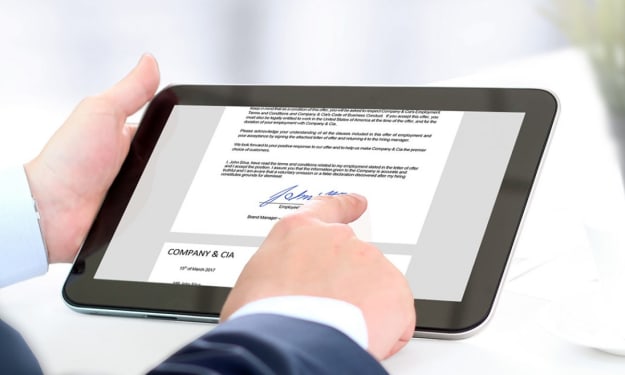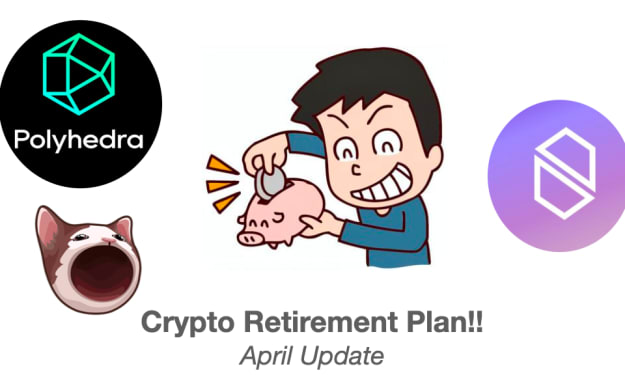Announcement Esignly is now adapted smart contract blockchain technology
Esignly is a leading software for digital signature in banking and other sectors of the economy.

It is one of the most reliable, secured and authentic electronic signature for insurance that is trusted by many valuable signature players for their signing and documentation needs. Here is what Esignly offer to its users in brief:
Keep users well-served with varied online documentation requirements.
Allows users to create their own template and offer access to the free ready-made templates of Esignly library.
Users can customize signature fields as per the need (adding or remove the fields)
Give instructions to the signers.
Decide the signing order or sequence to the form.
Control user access and assign privileges to users.
Assign signing access to multiple users at the same time.
Create verification and privacy filters for the documents.
Boost your user experience with customized branding.
Do You Know ?
Overall Spending on Blockchain Solutions till 2019 was 2.7Billion USD.
Many organizations in the consumer items and assembling sectors at present utilizing Blockchain is 29%.
71% of business pioneers who are effectively utilizing blockchain assume a critical part in propelling innovation, proposing broad support for industry norms.
Electronic signature for insurance (and other sector) transactions have expanded from $89 million to $754 million in only five years.
Blockchain technology envision a world wherein reports are installed in digital codes and put away in a shared, transparent data set, where these reports are shielded from cancellation, altering, and update.
In this globe, each contract, each process, each assignment, and each payment made can be a signature or a digital record that could be distinguished, approved, put away, and shared.
Go-betweens like attorneys, intermediaries, and organizations like legal officials may presently don't be important. People, companies, and tools would openly execute and cooperate with each other with little contact.
The possible utilization of content distribution and decentralization is huge: individuals will claim their digital identities and documents, making a solitary, unchangeable data store. Think about all the medical data, identity documents, licences, educational or professional certificates, that can be stored safely using Electronic signature for insurance .
Every one of these reports and their metadata can be carefully signed utilizing blockchain.
Understudies, for instance, may apply for higher studies, a job opportunity, or shifting to another country. An e signature for insurance would be important to demonstrate their degree of studies or knowledge of a language to go to college. Factors like selection officers, seniors, government, and colleges can confirm the understudy's accreditations without depending on core authorities, in not more than minutes, and with no mediators.
How Digital Signatures Work? An opportunity to create tamper proof documents or records.
Suppose an educational institution issues certificates. These authentic certificates are put away on a unified report management system or a distributed document system and are signed with cryptographic features.
Then the record metadata, URI and the content hash are embedded and put away on the blockchain ledger and joined to the client's digitized identity. The framework gives a special realness token, which recognizes the record in a non-problematic manner.
The original report data is not saved in the blockchain, just the record's hash.
Utilizing an appropriated record makes the agreement decentralized and gives the most noteworthy conceivable efficiency, security, and compliance.
In the event that the hash values match, the record is credible, yet in the event that anything is altered, even a letter or a word, the hashes won't coordinate, making it clear that a change has happened.
How Digital Signatures Work - Verify Your Digital Assets
Suppose that, at a given point, a client needs to introduce their approval to an outsider, such as an employer. He can impart the credibility token to the third-party for confirmation. The token will be working as the record's address, as it contains all the important data to check that the document exists and is real (not forged).
Preparing reports and any unstructured information and their metadata and incorporating them with blockchain makes immutable and freely irrefutable records of transactions. There is presently a way to prove the presence and credibility for these digital resources.
Verification of existence means making an unalterable date and time stamp for a particular item. It implies that you can demonstrate that a specific data object, similar to an email, report, or picture, existed at one point on schedule.
Confirmation of existence declares that an article is valid, i.e., that it has not changed since it was stored at the shown time moment. This is cultivated by carefully signing an item and accordingly making a hash, its special identifier. The identifier gets then dedicated into the conveyed blockchain record, and the exchange gets timestamped also.
Since each section in the blockchain is immutable, this implies that you have evidence that this particular article existed at one point on schedule.
Why use Blockchain to Create a Digital Signature through Esignly digital signature in banking.
For what reason would it be advisable for us to utilize blockchain to sign and check digital resources when the best esignature service like Esignly as of now exists and is extensively received in the business? Here is the reason:
Electronic signatures stored on a blockchain live freely of the item the signature addresses to. There is no requirement for a central timestamping server, or central certificate authority which are the normal requirements of existing digital signature in banking software.
You can accomplish signing and autonomous confirmation, with or without the actual item.
You presently don't store electronic signatures within the document, similarly as with e signature solutions. With the outdated software, whoever expected to check if a report is signed would have full perused access to all the content in the archive.
By signing documents using blockchain, the item isn't changed by the signature, empowering you to sign records in parallel and execute business rules dependent on orders, rank, and others.
In conclusion, you can enlist various activities in an order or sequence on a blockchain. Every enrollment is connected to a particular document, case and task performed by the parties in question, making a chain of exchanges: an auditable path. This review trail would then be able to be confirmed by approved third-parties, offering compliance, transparency, and trust.
Esignly has accepted smart contracts blockchain technology to make its services and features more relevant, faster, secured and easier for its users.
About the Creator
Paula Williams
Paula Williams is a product manager at Esignly. Esignly serves you the best, satisfying its customers with their digital signature requirements across all the industry.






Comments
Paula Williams is not accepting comments at the moment
Want to show your support? Send them a one-off tip.